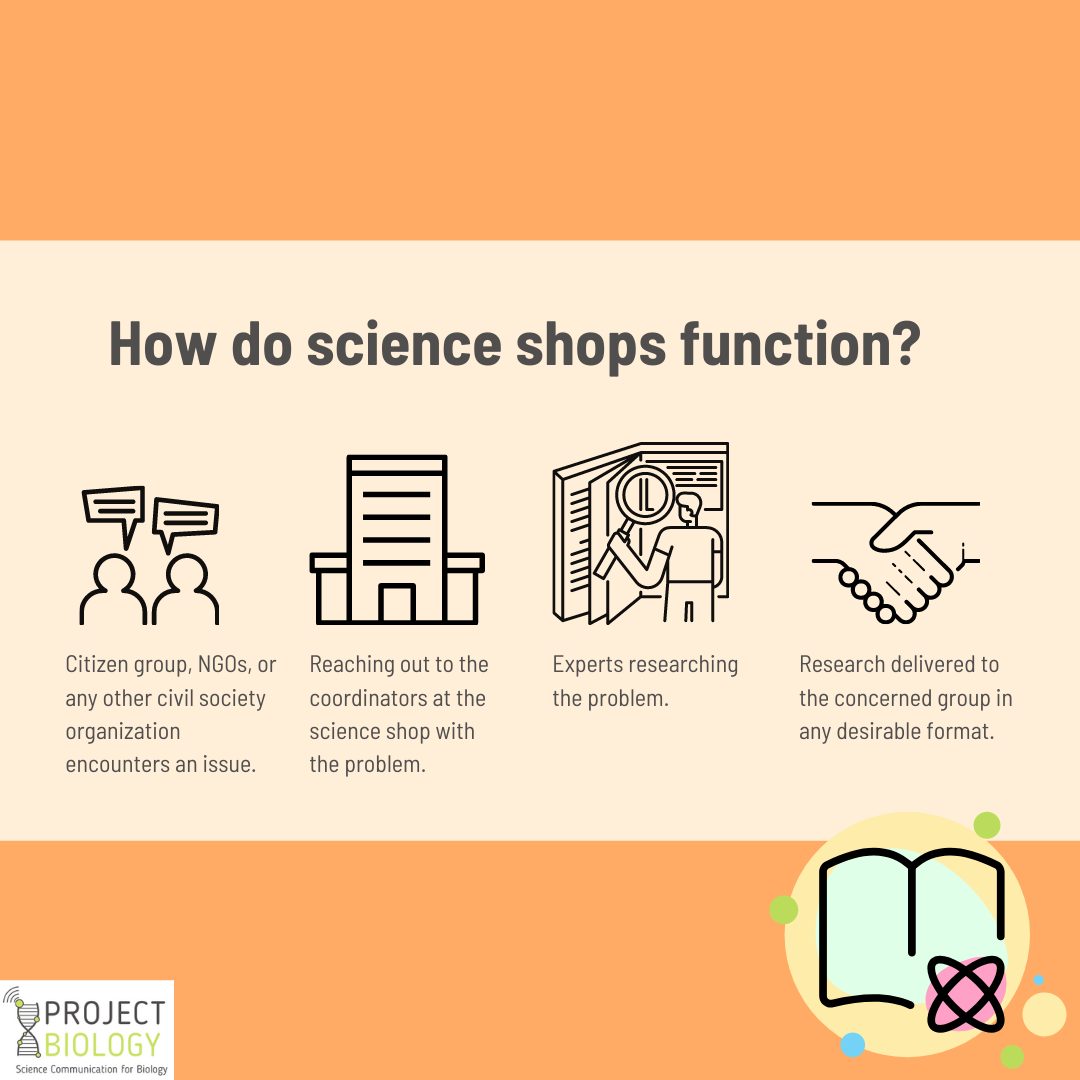During the 46th Regular Session of the Human Rights Council, UN-Secretary General António Guterres emphasized that:
The lives of women are perhaps one of the most accurate barometers of the health of society as a whole.
Thus, to ensure the sexual and reproductive health of society, empowering women and girls becomes the most reliable pathway. Accordingly, maintaining female sexual and reproductive health ensures access to equal rights, accurate information, and affordable health facilities remain crucial.
Sexual and reproductive health involves the fundamental right of a person to have a healthy and safe sex life, to reproduce, and the freedom to choose the number, spacing, or timing of their children. Sexual health forms a component of reproductive rights.
As women must have access to adequate information to make their own choices about sexual and reproductive health, a science communicator can be a crucial facilitator.
Why should a science communicator be aware of the policy structures?
With time the policy structures continue to undergo a significant shift. Along with broadening horizons about health issues involving different community sections, public concerns need to be addressed. Now, the policies do not operate in linearity but have become network-based.
As a science communicator, while covering the issues, the knowledge of policies and processes assumes utmost importance. It helps one connect their communique with the broader national and regional goals, even find lacunae, and suggest an improvement.
It also helps one understand the state of health per the policies and how people can benefit from policies once they become informed. Accordingly, the science communicators assume an important stance in these networks, connecting people with government and vice versa for decision making.
The international stage for policy structure
The first document to officially include reproductive rights within human rights was the Final Act of the Tehran Conference on Human Rights, 1968. Since then, multiple conferences and declarations have addressed the issue. According to the World Health Organization (WHO), sexual and reproductive health involves five key components, namely:
- Safeguarding contraceptive choice and safety and infertility services;
- Improving maternal and newborn health;
- Reducing sexually transmitted infections, including HIV and other reproductive diseases;
- Eradicating unsafe abortion and providing post-abortion care; and
- Promoting healthy sexuality, including adolescent health, and reducing harmful practices like FGM.
The realization of sexual health has recently been included as an integral part of the 2030 Sustainable Development Goals (SDGs) relating to health, education, and gender equality.
Moreover, governments and health organizations worldwide continue to collaborate to achieve universal and uniform access to sexual and reproductive health and rights, including family planning for citizens.
The national stage for policy structure
The Constitution of India does not expressly recognize reproductive rights. While making decisions, the courts interpret the right to health and the right to timely and adequate medical treatment as an integral part of the right to health. The denial of reproductive rights is considered a violation of fundamental and human rights.
Moreover, reproductive rights can be located under different laws and policies concerning education, protection from gender-based violence, employment, health, and food and nutrition provision. Additionally, some fundamental rights also find a place under Part III of the Indian constitution.
For example, in Suchita Srivastava and Another v Chandigarh Administration, the Supreme Court recognized reproductive autonomy as a dimension to personal liberty as guaranteed under Article 21.
Further, India’s National Population Policy aims to guarantee voluntary access to the full range of contraceptive methods to women. Also, India remains a signatory to numerous international conventions that include:
- Elimination of All Forms of Discrimination against Women (CEDAW)
- International Covenant on Civil and Political Rights (ICCPR)
- International Covenant on Economic, Social and Cultural Rights (ICESCR)
- Convention on the Rights of the Child (CRC)
In India, the following key Policies and Programs also address sexual and reproductive health issues.
National Health Policy (NHP) 2017
Key highlights:
- Shifting focus from “sick-care” to “wellness” to support prevention and well-being.
- Increase in public health expenditure to 2.5% of the GDP.
- Strengthen health systems by ensuring access to quality services and technology at affordable costs.
- Focus on primary health care by directing 2/3 of health expenditure.
The policy also lists quantitative targets to be achieved by 2025, such as an increase in life expectancy, a decrease in mother and infant mortality rate, and full immunization of infants with 90:90:90 treatment for HIV/AIDS. By 2020 the target was for 90% of people living with HIV to know their HIV status, 90% of people diagnosed with HIV infection to receive antiretroviral therapy, and 90% of people receiving antiretroviral therapy to have viral suppression.
The policy also states:
“Research on social determinants of health along with neglected health issues such as disability and transgender health will be promoted.”
However, the transgender communities remain absent from the list of vulnerable groups. There remains a lack of clarity about the hospital-ward admissions for the third gender. The policy also mentions focused interventions for HIV/AIDS control for high-risk communities such as men who have sex with men and transgender female sex workers.
Ayushman Bharat (Healthy India) initiative 2018
Ayushman Bharat is a National Health Protection Scheme to increase access to quality health and cover medical expenses by covering almost 40% of the population. The scheme aims to improve health outcomes, patient satisfaction, quality, and timely treatment, thus improving the quality of life.
- Cover over 10 crore low-income families with a defined benefits cover of Rs. 5 lakh per family per year.
- Portable across the country and a beneficiary will be permitted to take cashless benefits from any public/private impaneled hospitals across the country.
- Transforming and upgrading existing health sub-centers into Health and wellness centers (HWCs).
- To involve the central and state government in providing quality and affordable health services to citizens.
- To provide healthcare services for family planning, contraceptives, and others.
Regarding sexual and reproductive health issues, the School Health Programs (SHP) operational guidelines are interesting to note. These guidelines mention the selection of teachers as health and wellness ambassadors.
The ambassadors will carry out the activities per the themes of Rashtriya Kishor Swathya Karyakram, one of which includes improving sexual and reproductive health. The SHP also aims to engage the upper primary class students about the stereotypes related to gender and sexuality and ways to promote gender equality.
National Health Mission 2013
India’s government launched the National Health Mission (NHM) in 2013 by amalgamating the National Rural Health Mission and National Urban Health Mission.
The focus areas include strengthening the health systems in rural and urban areas for – Reproductive-Maternal- Neonatal-Child and Adolescent Health (RMNCH+A) and Communicable and Non-Communicable Diseases. The NHM envisions the achievement of widespread access to equitable, affordable & quality health care services as per people’s needs.
- Reduce Infant mortality rate and maternal mortality ratio.
- Prevention and reduction of anemia in women aged 15–49 years.
- Prevent and reduce mortality & morbidity from communicable, non-communicable; injuries and emerging diseases
- Vaccination of children on time to protect them against measles, mumps, and rubella
The National Youth Policy, 2014 (NYP-2014)
The National Youth Policy, 2014 (NYP-2014) defines the Government of India’s vision for the Youth and identifies the key areas of action, improvement, and implementation is to be done. Enable overall youth development and provide a framework for action. The definition of youth under the Policy is defined under this age-group of 15-29 years.
- Create a productive workforce that can make a sustainable contribution to India’s economic development
- With more focus on Education, Employment and Skill Development and Entrepreneurship
- Build a healthy youth community with a focus on Lifestyle and promotion to Sports.
- Inculcate social values and promote community engagement.
- Support youth at risk and create equitable opportunities for all.
Rashtriya Kishor Swasthya Karykram 2014
The Rashtriya Kishor Swasthya Karyakram was launched on 7th January 2014. The Ministry of Health & Family Welfare has launched this health program for adolescents in 10-19 years. The target areas would be adolescents’ nutrition, sexual, reproductive, mental health, prevention of violence, and substance abuse. The key principles are adolescent participation and leadership, Equity and inclusion, Gender equality.
Establish adolescent-friendly health clinics, community-based peer education program. Supply of commodities like iron and folic capsules, sanitary napkins, and health workers’ capacity building to address adolescents’ needs.
National Policy for Women, 2016
Salient features of the National policy for women empowerment:
- To create an equitable society to ensure equal rights and opportunities for women.
- Review the criminalization of marital rape.
- Health and education of women and girls. Focus on access to pre-primary education and retention of adolescent girls.
- Suitable benefits related to maternity and child care services
- Giving working women “Flexi timings, increased maternity leave, provision of child care/creches at the workplace, life cycle health care facilities.
The policy draft also talks about special emphasis to be given on healthcare challenges faced by adolescents. It aims to focus on the reproductive and sexual health needs of adolescents. Moreover, it also addresses the dearth of healthcare about mental and physiological issues for menopausal women. To ensure checkups and treatments during and post-pregnancy for surrogates, it aims to provide healthcare coverage. It also aims to address the issue of female-centric sterilization to shift focus on male sterilization as well.
8. The Surrogacy (Regulation) Bill, 2019
This bill was introduced in 2019 by the Minister of Health and Family Welfare, Dr. Harsh Vardhan, in Lok Sabha. The Bill defines surrogacy as a practice where a woman gives birth to a child for a couple to hand over the child after the birth to the intending couple. It is only allowed for intending couples who suffer from proven infertility, non-commercial purposes, prostitution, or other exploitation forms.
Although the government initiatives continue to be inclusive, addressing the age-old ignored issues, yet the scope for improvement remains large. The appropriate information fails to reach the target groups. There remain discriminatory behaviors against women. Such behaviors isolate women from their rights, and the exploitation along with ill-health continues. We can take science to the women who need it in a targeted manner, empowering them with the right information to lead healthy lives through science communication.




